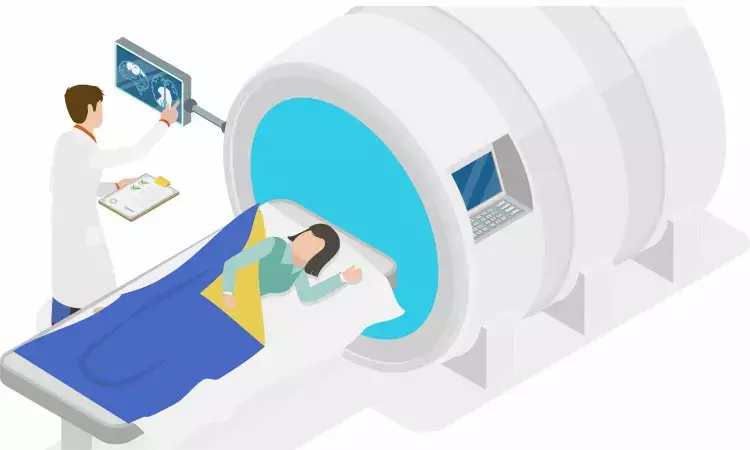- Home
- Medical news & Guidelines
- Anesthesiology
- Cardiology and CTVS
- Critical Care
- Dentistry
- Dermatology
- Diabetes and Endocrinology
- ENT
- Gastroenterology
- Medicine
- Nephrology
- Neurology
- Obstretics-Gynaecology
- Oncology
- Ophthalmology
- Orthopaedics
- Pediatrics-Neonatology
- Psychiatry
- Pulmonology
- Radiology
- Surgery
- Urology
- Laboratory Medicine
- Diet
- Nursing
- Paramedical
- Physiotherapy
- Health news
- Fact Check
- Bone Health Fact Check
- Brain Health Fact Check
- Cancer Related Fact Check
- Child Care Fact Check
- Dental and oral health fact check
- Diabetes and metabolic health fact check
- Diet and Nutrition Fact Check
- Eye and ENT Care Fact Check
- Fitness fact check
- Gut health fact check
- Heart health fact check
- Kidney health fact check
- Medical education fact check
- Men's health fact check
- Respiratory fact check
- Skin and hair care fact check
- Vaccine and Immunization fact check
- Women's health fact check
- AYUSH
- State News
- Andaman and Nicobar Islands
- Andhra Pradesh
- Arunachal Pradesh
- Assam
- Bihar
- Chandigarh
- Chattisgarh
- Dadra and Nagar Haveli
- Daman and Diu
- Delhi
- Goa
- Gujarat
- Haryana
- Himachal Pradesh
- Jammu & Kashmir
- Jharkhand
- Karnataka
- Kerala
- Ladakh
- Lakshadweep
- Madhya Pradesh
- Maharashtra
- Manipur
- Meghalaya
- Mizoram
- Nagaland
- Odisha
- Puducherry
- Punjab
- Rajasthan
- Sikkim
- Tamil Nadu
- Telangana
- Tripura
- Uttar Pradesh
- Uttrakhand
- West Bengal
- Medical Education
- Industry
Radiation exposure from imaging in children increased risk of hematologic cancer: NEJM

A new study published in The New England Journal of Medicine showed a link between radiation exposure from medical imaging and a tiny but considerable elevated risk of hematologic cancer in children and adolescents.
Although medical imaging, especially computed tomography (CT), it exposes them to ionizing radiation. There is evidence that cumulative radiation exposure raises the risk of cancer, particularly hematologic malignancies. In pediatric treatment, it is essential to comprehend this relationship to strike a balance between long-term safety and diagnostic advantages. Thus, this study was evaluated the risk of radiation-induced hematologic malignancy in children and adolescents based on medical imaging.
This research tracked a retrospective cohort of 3,724,623 infants born in 6 U.S. health care systems and Ontario, Canada, between 1996 and 2016 until the earliest of the following events: death, cessation of health care coverage, age 21, diagnosis of cancer or benign tumor, or December 31, 2017. Medical imaging radiation exposures to active bone marrow were measured. Continuous-time hazards models were used to evaluate associations between cumulative radiation exposure (as opposed to no exposure) and hematologic malignancies with a 6-month lag.
A total of 2961 hematologic malignancies were identified throughout the course of 35,715,325 person-years of follow-up, mostly lymphoid cancers (2349 [79.3%]), myeloid tumors or acute leukemia (460 [15.5%]), and histiocytic or dendritic cell cancers (129 [4.4%]). Children exposed to at least 1 mGy had an overall mean (±SD) exposure of 14.0±23.1 mGy, whereas children with hematologic cancer had an exposure of 24.5±36.4 mGy.
With a relative risk of 1.41 (95% CI), 1.11 to 1.78 for 1 to less than 5 mGy, 1.82 (95% CI, 1.33 to 2.43) for 15 to less than 20 mGy, and 3.59 (95% CI, 2.22 to 5.44) for 50 to less than 100 mGy, the risk of cancer increased with cumulative dosage.
A higher risk of all hematologic malignancies and the majority of tumor subtypes was linked to the cumulative radiation exposure to bone marrow. Among children exposed to at least 30 mGy (mean, 57 mGy), the elevated cumulative incidence of hematologic malignancies by age 21 was 25.6 per 10,000.
According to our estimates, radiation exposure from medical imaging may have contributed to 10.1% (95% CI, 5.8 to 14.2) of hematologic malignancies in our cohort, with larger risks associated with higher-dose medical imaging procedures like CT. Overall, a dose-dependent increase in the incidence of hematologic malignancies was linked to cumulative radiation exposure from medical imaging throughout infancy.
Source:
Smith-Bindman, R., Alber, S. A., Kwan, M. L., Pequeno, P., Bolch, W. E., Bowles, E. J. A., Greenlee, R. T., Stout, N. K., Weinmann, S., Moy, L. M., Stewart, C., Francisco, M., Kofler, C., Duncan, J. R., Ducore, J., Mahendra, M., Pole, J. D., & Miglioretti, D. L. (2025). Medical imaging and pediatric and adolescent hematologic cancer risk. The New England Journal of Medicine,. https://doi.org/10.1056/nejmoa2502098
Neuroscience Masters graduate
Jacinthlyn Sylvia, a Neuroscience Master's graduate from Chennai has worked extensively in deciphering the neurobiology of cognition and motor control in aging. She also has spread-out exposure to Neurosurgery from her Bachelor’s. She is currently involved in active Neuro-Oncology research. She is an upcoming neuroscientist with a fiery passion for writing. Her news cover at Medical Dialogues feature recent discoveries and updates from the healthcare and biomedical research fields. She can be reached at editorial@medicaldialogues.in
Dr Kamal Kant Kohli-MBBS, DTCD- a chest specialist with more than 30 years of practice and a flair for writing clinical articles, Dr Kamal Kant Kohli joined Medical Dialogues as a Chief Editor of Medical News. Besides writing articles, as an editor, he proofreads and verifies all the medical content published on Medical Dialogues including those coming from journals, studies,medical conferences,guidelines etc. Email: drkohli@medicaldialogues.in. Contact no. 011-43720751


